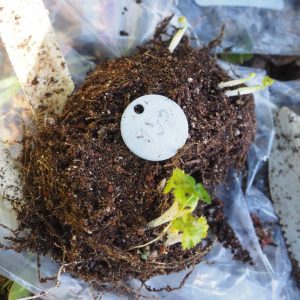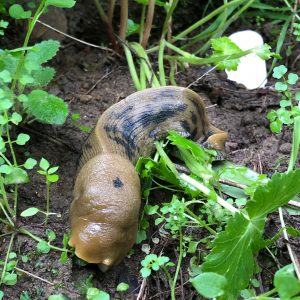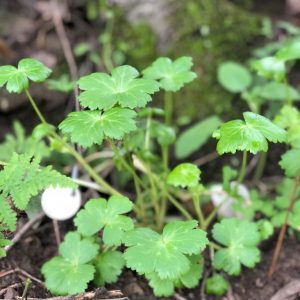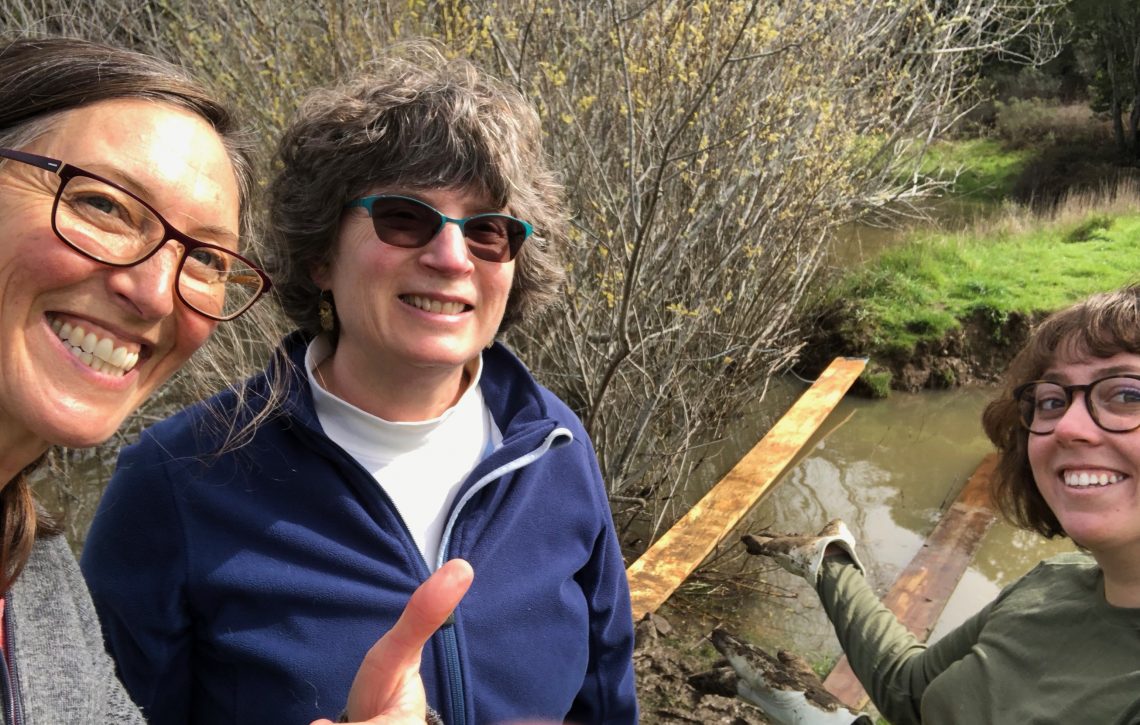
Vanessa Handley, Director of Research & Collections
The Garden’s magnificent public collections are its raison d’être but behind-the-scenes conservation projects are also points of great institutional pride. Conservation activities at UCBG are very diverse and include propagation in the Nursery, population monitoring at remote sites and genetic analyses in the laboratory.
As befits a Garden with a flagship California collection, the majority of our conservation work focuses on imperiled native plants. More often than not, our California projects require long days in the field, particularly in the spring season. While we may end up cold, muddy and a bit exhausted, we relish the opportunity to engage in these important species survival efforts.
A species in which we are particularly invested is Baker’s larkspur (Delphinium bakeri). This Federally and State-listed endangered species – a beautiful perennial endemic to Marin County – has been stewarded by UCBG for over a decade. Many staff and volunteers have contributed to this work, but the heart and soul of the Baker’s larkspur project is Holly Forbes, UCBG Curator. Starting with seed collected from the few remaining wild plants, Holly has directed the Garden’s multifaceted recovery efforts. With the long-term goal of establishing new, self-sustaining populations, she has guided field introductions of Baker’s larkspur (plants and seed) since 2009. This vital work has been logistically and financially supported by US Fish & Wildlife Service and with this assistance (and the willing hands of other staff, agency partners and volunteers) Holly continues to orchestrate introductions and subsequent monitoring. Given the inherent challenges of reestablishing a narrowly endemic species, recovery is a slow process. This makes the Garden’s long-term commitment all the more crucial.

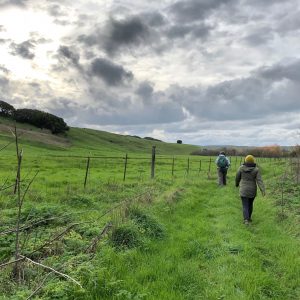
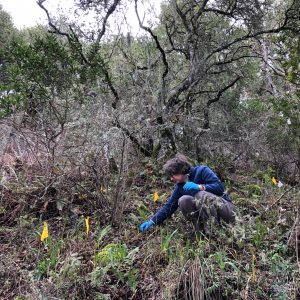
So that bring us to the silly question – why did the botanists cross the pond? To get to the endangered plants, of course! More precisely to monitor Baker’s larkspur. Last Thursday, Holly, Clare Loughran (UCBG Assistant Curator) and I set out to reach one of the original introduction sites, knowing full well that recent rains had swelled the pinch point between intervening bodies of water to heights we could not wade through. Thanks to UCBG Carpenter, Rick Boyer, we already had a sturdy 20-foot plank strapped to the rack of our truck, complete with metal cleats on which to fasten a rope. Our plan seemed like a good one back at the Garden – Holly, Clare and I would stand the board up on the water’s edge and then use the rope to gently lower it to the other side. Easy, right?
Once in the field we faced reality number one, a sturdy 20-foot plank is … well, HEAVY. Especially when damp! With team work, we got it off the roof and down the trail to the water. Reality number two: MUD. I lament that what followed was not videotaped, because it was some top-notch stuff. Have you ever tried to bring a 20-foot plank to vertical on slick, sloping mud? And then tried to lower it by ropes over deep water? Well, even if not, you probably get the (very comical) picture. Fortunately, after much laughter, much slipping and some solid strategizing we got the plank in place and successfully reached the plants. Go team!
This was only the first of four stops that day. We still had a crate of larkspur to outplant at a different, hike-in site and two other localities to monitor – that of the native population and another hike-in introduction site. The later spot was outplanted in January and we were delighted to see large and thriving plants (see the before and after photo below). Alas, we also found our foe, the banana slug; a few huge slugs were in the midst of chomping larkspur when we arrived. We escorted them off premises and were relieved to find that only one plant had sustained significant damage.
Finally, well after sundown, we returned to the Garden to unload supplies and close out a very productive day in the field. We look forward to conducting another round of Baker’s larkspur monitoring next month … and we hope our bridge still stands!
